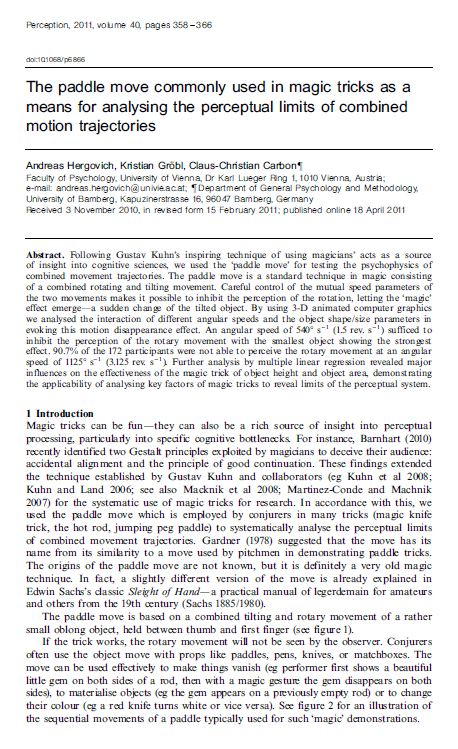¡Ayuda a la Biblioteca!
Descubrir nuevos libros, catalogarlos y reseñarlos para hacerlos accesibles de forma gratuita requiere un gran esfuerzo. Si quieres apoyar este proyecto, pulsa este botón y haz una donación por la cantidad que quieras:
 |  | 1-10 de los 14 documentos publicado en 2011
|  |  |
 | Mariano TOMATIS La mappa del Laberinto di Andrea Ghisi Stampato in proprio, Torino 2011. |
|
 | Mariano TOMATIS The Map of Andrea Ghisi's Laberinto Self-published, Torino 2011. |
|
 | Ennio GRAZIANI Giovanni Giuseppe Bartolomeo Vincenzo Merci in arte Gioseph Pinetti de Mercì Conte di Willedal. Un mago del XVIII secolo, padre dei prestigiatori. Note biografiche. Edito in proprio, Orbetello 2011. |
|
 | Allegra IAFRATE Si sequeris casum, casus frangit tibi nasum. La raccolta delle sorti del MS Ashmole 304 Aevum, N. 85, Università Cattolica del Sacro Cuore, Milano 2011. |
|
 | Carlos S. ALVARADO Eusapia Palladino: An Autobiographical Essay Journal of Scientific Exploration, N. 1, Vol. 25, Virginia Beach 2011, pp. 77-101. |
|
 | Claire TRÉVIEN The Spectacle of Science: The Art of Illusion in Prints of the French Revolution Rupkatha Journal on Interdisciplinary Studies in Humanities, N. 1, Vol. 3, Warwick 2011, pp. 42-51. |
|
 | Movable stationery Vol. 19, N. 1, Movable Book Society, New Brunswick febrero 2011. |
|
 | Andreas HERGOVICH, Kristian GRUBL e Claus-Christian CARBON The paddle move commonly used in magic tricks as a means for analysing the perceptual limits of combined motion trajectories Perception, N. 3, Vol. 40, marzo 2011, pp. 358-266.Following Gustav Kuhn's inspiring technique of using magicians' acts as a source of insight into cognitive sciences, the authors used the "paddle move" for testing the psychophysics of combined movement trajectories. The paddle move is a standard technique in magic consisting of a combined rotating and tilting movement. Careful control of the mutual speed parameters of the two movements makes it possible to inhibit the perception of the rotation, letting the "magic" effect emerge-a sudden change of the tilted object. By using 3-D animated computer graphics we analysed the interaction of different angular speeds and the object shape/size parameters in evoking this motion disappearance effect. An angular speed of 540° per second sufficed to inhibit the perception of the rotary movement with the smallest object showing the strongest effect. 90.7% of the 172 participants were not able to perceive the rotary movement at an angular speed of 1125 ° per second. Further analysis by multiple linear regression revealed major influences on the effectiveness of the magic trick of object height and object area, demonstrating the applicability of analysing key factors of magic tricks to reveal limits of the perceptual system. |
|
 | Movable stationery Vol. 19, N. 2, Movable Book Society, New Brunswick mayo 2011. |
|
 | Massimo BIONDI The Missing Links N. 5, GSE Edizioni, Rozzano junio 2011. |
|
 |  | 1-10 de los 14 documentos publicado en 2011
|  |  |














